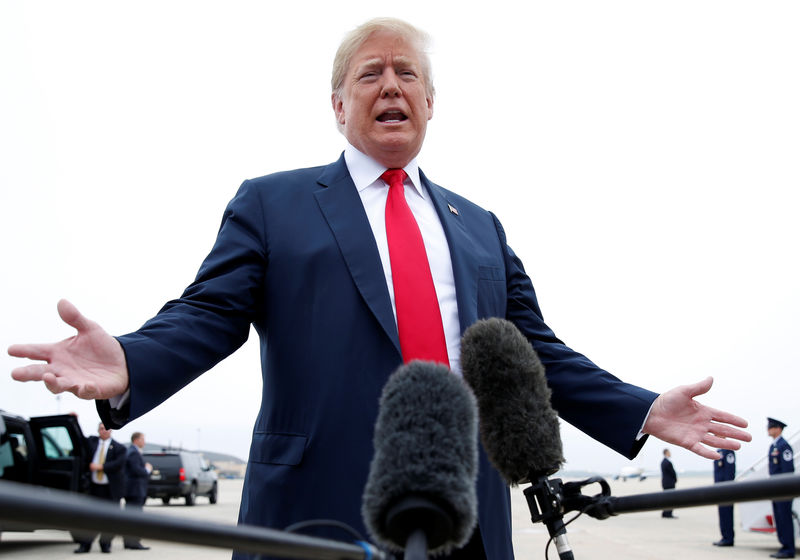(Bloomberg Opinion) -- For a president who came to office promising to revive America’s manufacturing sector, Donald Trump is increasingly looking like the champion of the country’s farm belt.
The agricultural sector will be the main beneficiary from Washington’s preliminary agreement with Japan, with the Asian country lowering or eliminating tariffs on about $7.2 billion of food and farm imports from the U.S. under terms announced late Wednesday. While the deal also includes an agreement on digital services, there aren’t any goodies for the industrial sector at this stage.
It’s not just Japan. For all that U.S. Trade Representative Robert Lighthizer has tried to mold a trade deal for the rust belt in line with Trump’s political priorities, any revived accord with China is likely to develop in a similarly farm-first direction.
This shouldn’t be all that surprising. Indeed, the explanation for what’s going on was laid out more than 200 years ago by the English economist David Ricardo. America is getting leeway on exporting more agricultural goods and commodities because those are the areas where it has a comparative advantage over its trading partners. Manufacturing and services are likely to prove considerably tougher.
The crucial part of Ricardo’s theory of comparative advantage was that the gains from trade will be greatest if two countries specialize in the respective industries where they have the biggest edge, even if one country is the most efficient producer in both sectors. As a result, there’s little point in getting hung up on whether American or Japanese manufacturing is more productive: The crucial factor is that agriculture in large, land-rich America has a clear advantage over the same sector in its Asian partner.
A more detailed way of looking at this would consider factors of production: land, labor and capital. Unlike Japan and China, America has an abundance of land relative to the size of its population, so it makes sense that it’s an exporter of land-intensive goods like soybeans, beef and pork. That’s particularly the case since the supply of capital in the U.S. allows it to invest far more intensively in mechanization of its farm sector. America has about 271 tractors for every 100 square kilometers (62 square miles) of arable land, far more than other land-rich countries such as Brazil, Argentina and Russia.
Meanwhile, China has a natural advantage in labor-intensive manufactured goods thanks to a workforce that’s more than three times the size of those in the U.S. and Japan together.
It’s little surprise that the area of trade diplomacy proving most intractable focuses on investment, intellectual property and non-tariff barriers, since those are the subjects where capital comes to the fore. Capital – both financial, and the human sort, which makes America a leader in high-end design and manufacturing – is probably the measure in which the three countries are most evenly matched. As a result, the gains from skewing the playing field via trade agreements are much greater, which sharply diminishes the likelihood that both sides will actually agree to such accords.
There’s a lesson in this for Trump and Lighthizer. Agriculture is one area where trade barriers have remained stubbornly high in recent decades. The Doha round of World Trade Organization talks, which foundered more than a decade ago, largely collapsed because countries have remained so protective of their farm tariffs.
At the same time, there have been signs of progress in agriculture in recent years, during a period when free trade as a whole has been in retreat. The deal between the European Union and Japan agreed upon last year will see the Asian country eliminate duties on 90% of agricultural imports from Europe. It also pushes both sides to align their health and food safety regulations for plants and animals.
China – struggling to cope with the effects of African Swine Fever, which has helped push up pork prices 47% from a year earlier – also seems open to buying more food from abroad. This is a sharp change for a country that’s traditionally aimed at self-sufficiency.
The U.S. farm belt has so far seen precious little return on its loyalty to Trump. But there’s an opportunity here for Washington to chalk up some wins for its trade diplomacy while delivering goodies for the heartland. Trump needs to stop trying to command the tide of global trade to retreat, and focus on what America does best.
